
Industrial component provider Timken (NYSE:TKR) reported revenue ahead of Wall Street’s expectations in Q4 CY2024, but sales fell by 1.6% year on year to $1.07 billion. Its non-GAAP profit of $1.16 per share was 17.2% above analysts’ consensus estimates.
Is now the time to buy Timken? Find out by accessing our full research report, it’s free.
Timken (TKR) Q4 CY2024 Highlights:
- Revenue: $1.07 billion vs analyst estimates of $1.07 billion (1.6% year-on-year decline, 0.8% beat)
- Adjusted EPS: $1.16 vs analyst estimates of $0.99 (17.2% beat)
- Adjusted EBITDA: $178.2 million vs analyst estimates of $161.2 million (16.6% margin, 10.5% beat)
- Adjusted EPS guidance for the upcoming financial year 2025 is $5.55 at the midpoint, missing analyst estimates by 11.8%
- Operating Margin: 10.5%, in line with the same quarter last year
- Free Cash Flow Margin: 11.6%, up from 6.9% in the same quarter last year
- Organic Revenue fell 2.6% year on year (-5.4% in the same quarter last year)
- Market Capitalization: $5.53 billion
"We delivered a good finish to the year with strong cash flow in the fourth quarter," said Tarak Mehta, president and chief executive officer.
Company Overview
Established after the founder noticed the difficulty freight wagons had making sharp turns, Timken (NYSE:TKR) is a provider of industrial parts used across various sectors.
Engineered Components and Systems
Engineered components and systems companies possess technical know-how in sometimes narrow areas such as metal forming or intelligent robotics. Lately, automation and connected equipment collecting analyzable data have been trending, creating new demand. On the other hand, like the broader industrials sector, engineered components and systems companies are at the whim of economic cycles. Consumer spending and interest rates, for example, can greatly impact the industrial production that drives demand for these companies’ offerings.
Sales Growth
A company’s long-term sales performance signals its overall quality. Even a bad business can shine for one or two quarters, but a top-tier one grows for years. Over the last five years, Timken grew its sales at a sluggish 3.8% compounded annual growth rate. This fell short of our benchmark for the industrials sector and is a rough starting point for our analysis.
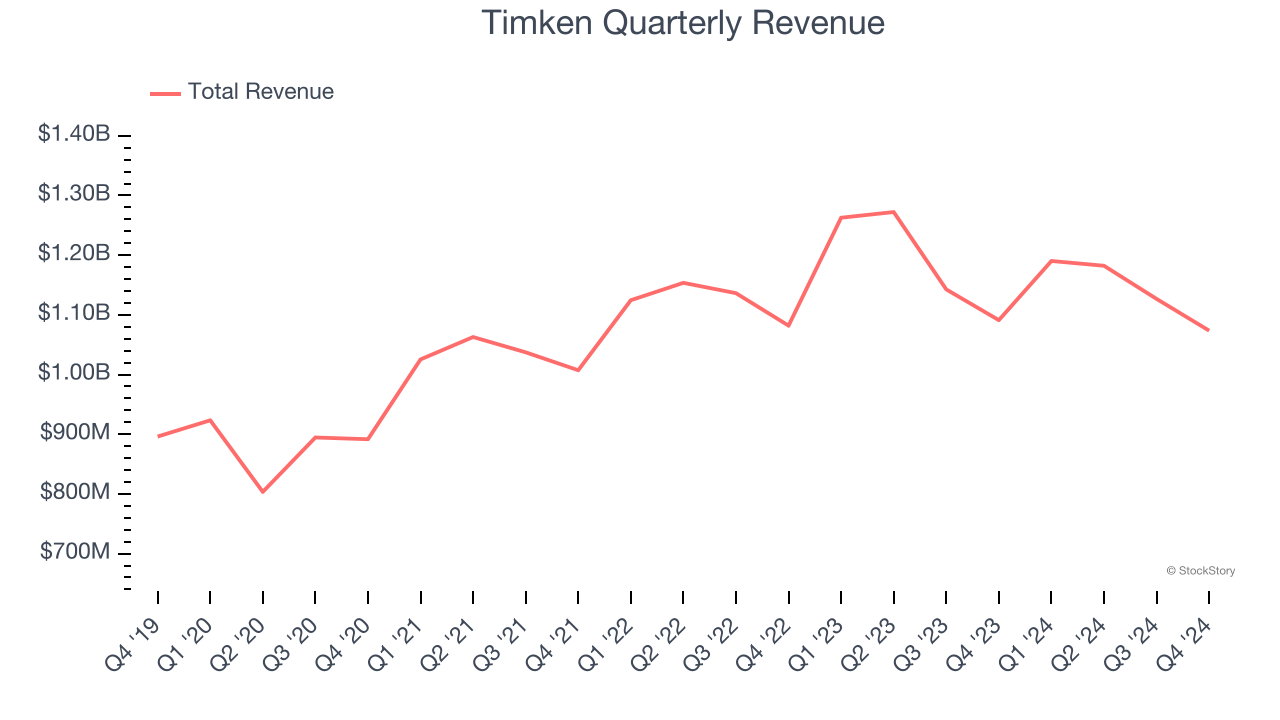
Long-term growth is the most important, but within industrials, a half-decade historical view may miss new industry trends or demand cycles. Timken’s recent history shows its demand slowed as its revenue was flat over the last two years. 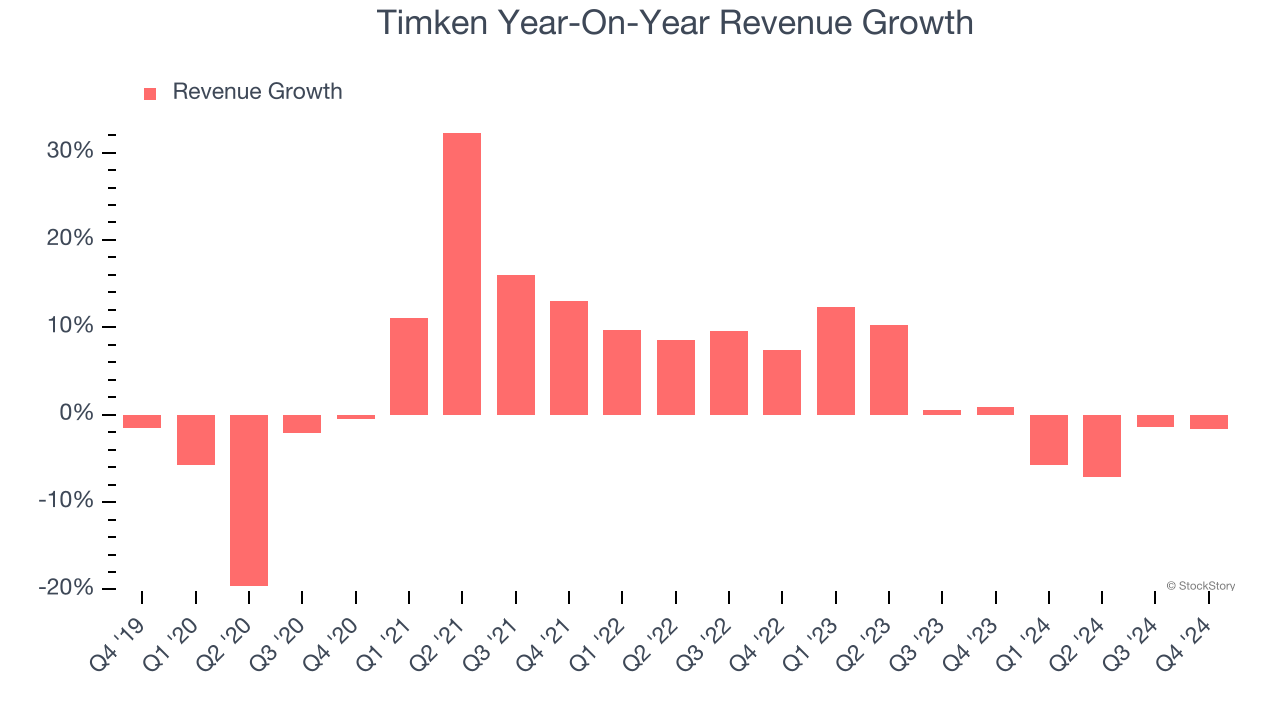
We can better understand the company’s sales dynamics by analyzing its organic revenue, which strips out one-time events like acquisitions and currency fluctuations that don’t accurately reflect its fundamentals. Over the last two years, Timken’s organic revenue averaged 2.3% year-on-year declines. Because this number is lower than its normal revenue growth, we can see that some mixture of acquisitions and foreign exchange rates boosted its headline results. 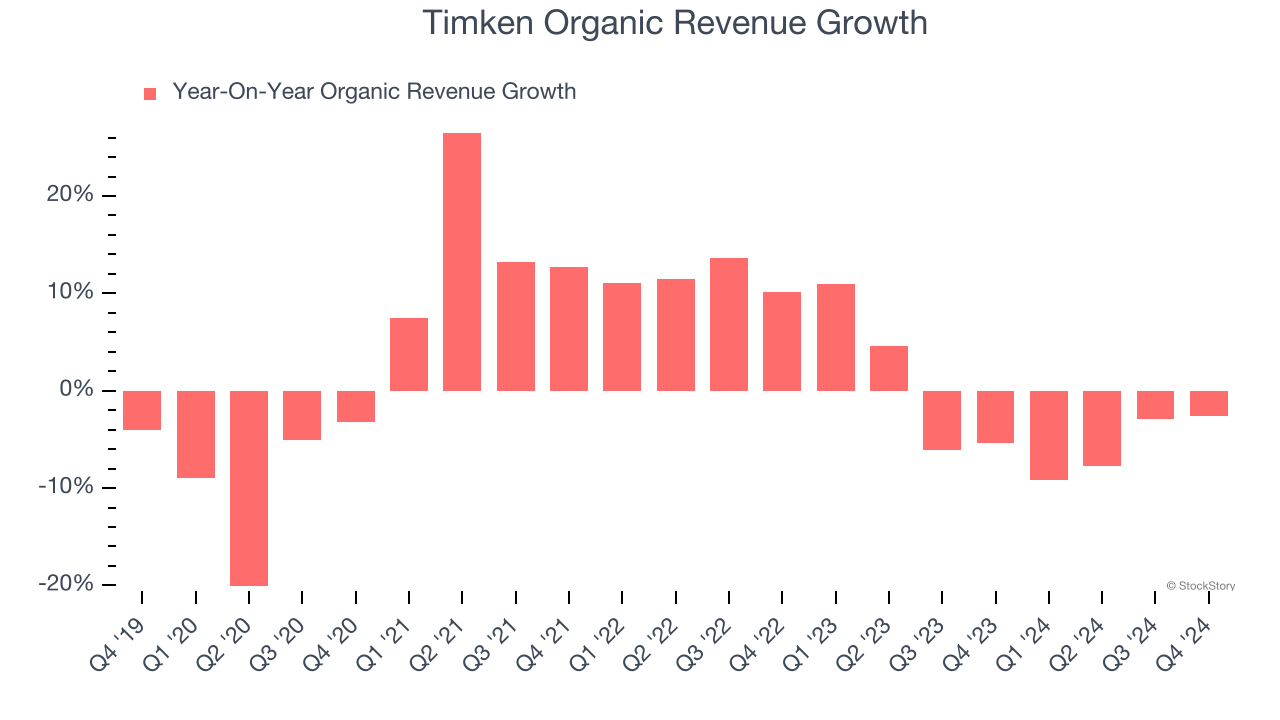
This quarter, Timken’s revenue fell by 1.6% year on year to $1.07 billion but beat Wall Street’s estimates by 0.8%.
Looking ahead, sell-side analysts expect revenue to grow 1.4% over the next 12 months, similar to its two-year rate. This projection doesn't excite us and implies its newer products and services will not accelerate its top-line performance yet.
Software is eating the world and there is virtually no industry left that has been untouched by it. That drives increasing demand for tools helping software developers do their jobs, whether it be monitoring critical cloud infrastructure, integrating audio and video functionality, or ensuring smooth content streaming. Click here to access a free report on our 3 favorite stocks to play this generational megatrend.
Operating Margin
Timken has been an efficient company over the last five years. It was one of the more profitable businesses in the industrials sector, boasting an average operating margin of 13.2%. This result was particularly impressive because of its low gross margin, which is mostly a factor of what it sells and takes huge shifts to move meaningfully. Companies have more control over their operating margins, and it’s a show of well-managed operations if they’re high when gross margins are low.
Looking at the trend in its profitability, Timken’s operating margin might have seen some fluctuations but has generally stayed the same over the last five years , highlighting the long-term consistency of its business.
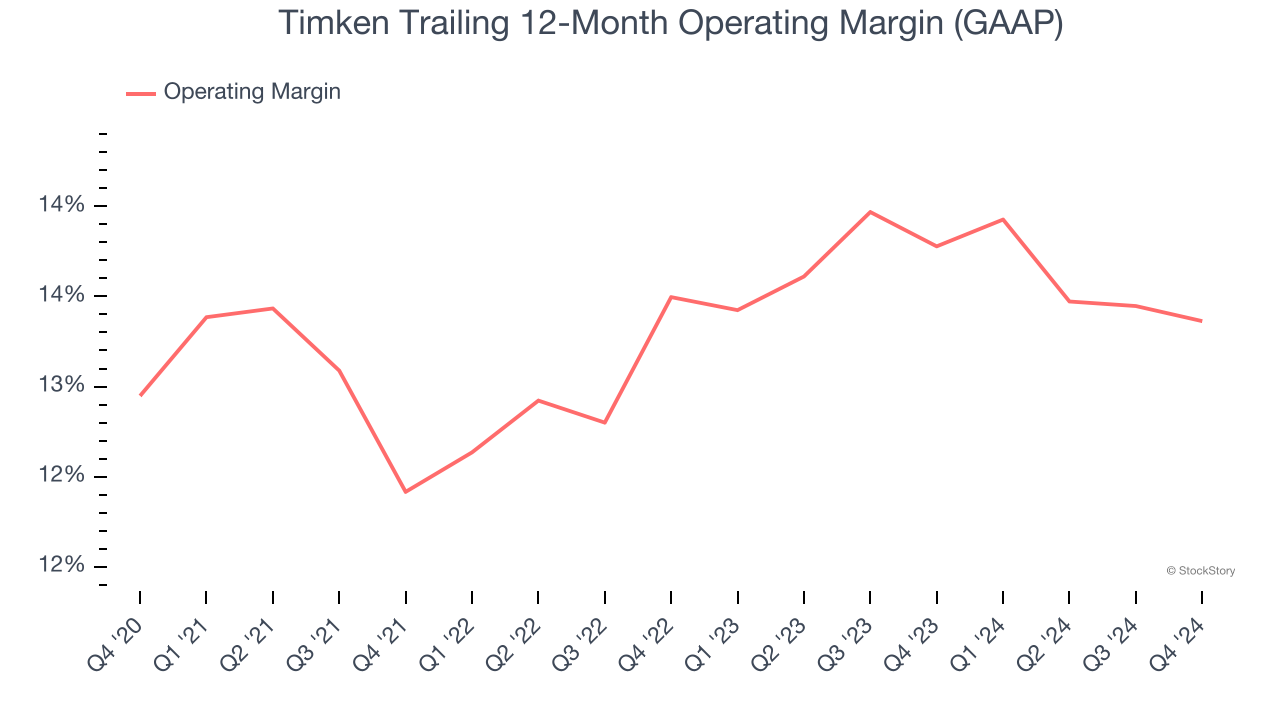
This quarter, Timken generated an operating profit margin of 10.5%, in line with the same quarter last year. This indicates the company’s cost structure has recently been stable.
Earnings Per Share
We track the long-term change in earnings per share (EPS) for the same reason as long-term revenue growth. Compared to revenue, however, EPS highlights whether a company’s growth is profitable.
Timken’s unimpressive 4.7% annual EPS growth over the last five years aligns with its revenue performance. This tells us it maintained its per-share profitability as it expanded.
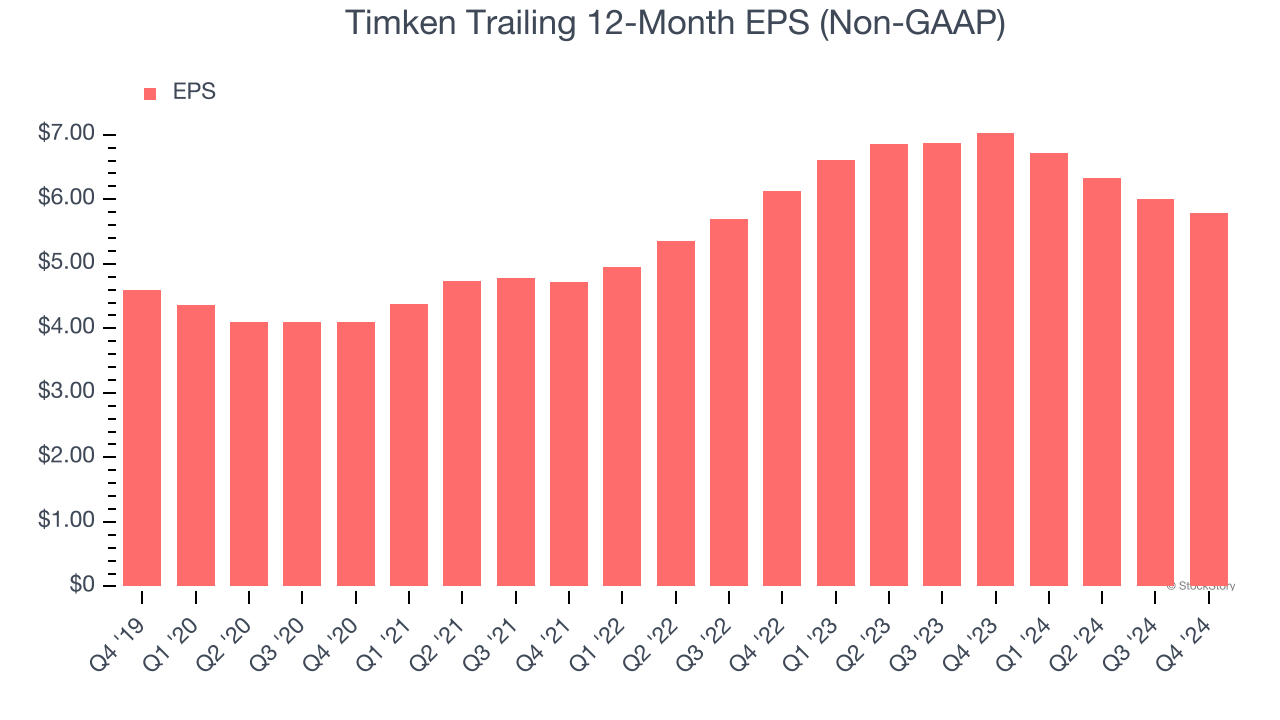
Like with revenue, we analyze EPS over a more recent period because it can provide insight into an emerging theme or development for the business.
Timken’s two-year annual EPS declines of 2.8% were bad and lower than its flat revenue.
In Q4, Timken reported EPS at $1.16, down from $1.37 in the same quarter last year. Despite falling year on year, this print easily cleared analysts’ estimates. Over the next 12 months, Wall Street expects Timken’s full-year EPS of $5.79 to grow 9.5%.
Key Takeaways from Timken’s Q4 Results
We were impressed by how significantly Timken blew past analysts’ EBITDA expectations this quarter. We were also glad its EPS outperformed Wall Street’s estimates. On the other hand, its full-year EPS guidance missed significantly. Overall, this quarter was mixed, but areas below expectations seem to be driving the move, and shares traded down 2.6% to $76.99 immediately after reporting.
So should you invest in Timken right now? What happened in the latest quarter matters, but not as much as longer-term business quality and valuation, when deciding whether to invest in this stock. We cover that in our actionable full research report which you can read here, it’s free.
